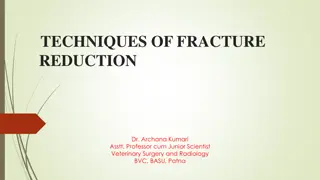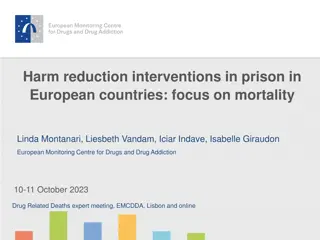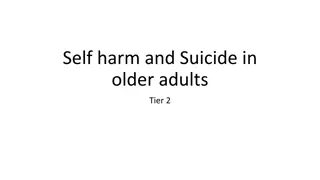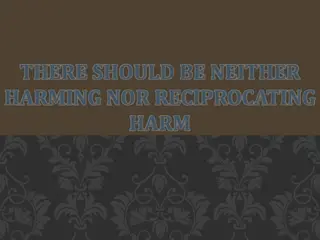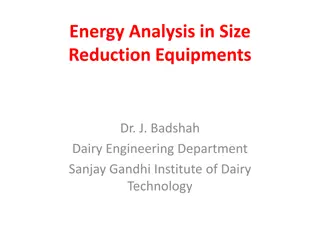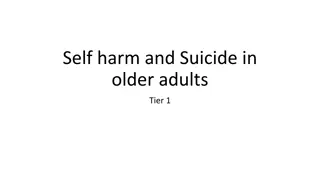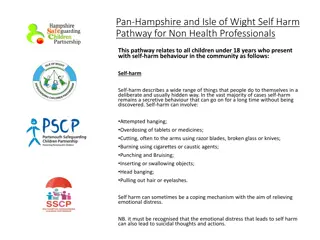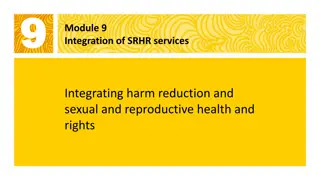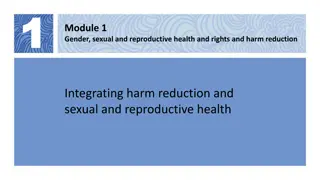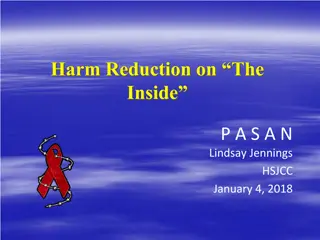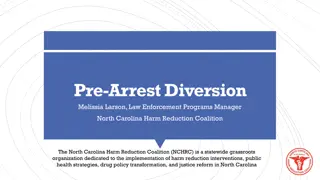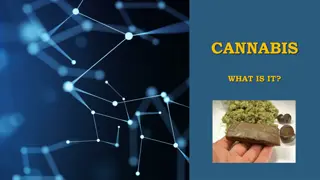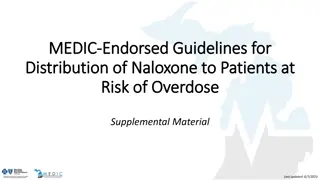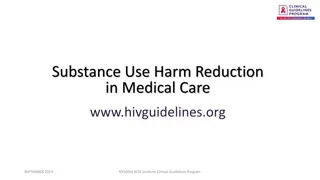Harm Reduction Training Project Overview
This project focuses on Harm Reduction training to increase understanding of substance use, stigma, and discrimination. It emphasizes non-judgmental, culturally responsive services to enhance health programs while reducing punitive measures. The training aims to promote inclusive and comprehensive social services for individuals and communities.
Uploaded on Sep 29, 2024 | 0 Views
Download Presentation

Please find below an Image/Link to download the presentation.
The content on the website is provided AS IS for your information and personal use only. It may not be sold, licensed, or shared on other websites without obtaining consent from the author.If you encounter any issues during the download, it is possible that the publisher has removed the file from their server.
You are allowed to download the files provided on this website for personal or commercial use, subject to the condition that they are used lawfully. All files are the property of their respective owners.
The content on the website is provided AS IS for your information and personal use only. It may not be sold, licensed, or shared on other websites without obtaining consent from the author.
E N D
Presentation Transcript
THN Volunteer HIV Core Training Project Harm Reduction
Acknowledgements Harm Reduction module task group members from: Black Coalition for AIDS Prevention (Black CAP) Queen West Community Health Centre (now Parkdale Queen West) Ontario HIV Substance Use Training Program (OHSUTP), Prisoners with HIV/AIDS Support Action Network (PASAN) Ontario Aboriginal HIV/AIDS Strategy (OAHAS) Presenter/Facilitator Kyle Vose, Toronto People With AIDS Foundation (PWA)
Learning Objectives: To increase understanding of the philosophy and practice of Harm Reduction. To reflect upon, examine and understand our own attitudes and beliefs about people who use substances. To increase an understanding of the stigma & discrimination faced by people who use substances. To understand the continuum of substance use and the stages of change.
What is Harm Reduction? How many here identify as a substance user? What are some common substances? How many of you practiced Harm Reduction to get to today s training?
Harm reduction recognizes that there is a continuum of risk in life, as there is in substance use, sex and other activities.
Harm Reduction provides accessible, flexible, culturally responsive and non-judgmental services for all.
Harm Reduction does not judge individuals on the basis of their individual behaviours
Harm reduction seeks to enhance social and health programs, disease prevention and education while minimizing repressive and punitive measures.
Harm reduction recognizes the right for comprehensive, accessible, flexible and culturally responsive non-judgmental social services for and the fulfillment of basic needs of all individuals and communities
Harm reduction provides options in a non-judgmental, non- coercive way and strongly advocates that the individuals and communities affected by drug use be involved in the creation of and implementation of harm reduction interventions.
What Harm Reduction is NOT About abstinence A stepping stone to abstinence Anti-abstinence The best response for everyone Does not say that drugs are good and that all behaviours are acceptable
What Harm Reduction IS: About social inclusion About practices, programs, policies all aimed at reducing harms associated with substance use About legal AND illegal substances Founded on public health and social justice Founded on knowledge that many drug-related programs are the result of failed policy and laws Value-based about drug use Founded on principles of respect Requires us to think systemically
How does our Language Reflect our Beliefs Drunks , Alcoholics >>> Individuals with problem alcohol use or Alcohol users , substance user . Druggies , >>> people who use drugs Junkies , a person living with an addiction Crack Heads or active substance users . Drug Abuse , >>> Substance use or Substance Abuse Problem Substance Use . clean , dirty >>> new or used equipment
AIVL AUSTRALIAN STIGMA & DISCRIMINATION OF INJECTION DRUG USERS https://www.youtube.com/watch?v=ASoKlgsZPCk
Determinants of Health Vulnerability Substance Use & HIV Infection Income and Social status Social Support Networks Education Employment/Working Conditions Social environments Physical Environments Personal Health Practices and Coping Skills Healthy Child Development Biology and Genetic Endowment Health Sciences Gender Culture
Determinants of Health Vulnerability to Substance Use & HIV Infection People use drugs for a variety of personal and systemic reasons. Influences affecting self-worth/self-esteem: Grief, Loss, Bereavement Depression, Anxiety, Stress Trauma Social Exclusion Stigma Trauma Discrimination Homophobia Racism Loss of hope
Key Elements of Drug Related Stigma Criminalise drugs = bad get tough punish. Incarcerating users for non-violent crime vs. resources into supportive services.
Key Elements of Drug Related Stigma Incarceration Incarceration of significant numbers of drug users increases the likelihood of drug use inside prisons. Most prisoners admit to having a substance use issue that would warrant treatment while in prison
Key Elements of Drug Related Stigma Incarceration Disproportionate representation of Aboriginal peoples inside due to systemic discrimination, socio-economic deprivation and other factors Most incarcerated women are survivors of childhood sexual abuse and/or domestic violence, and many women have been economically, racially, culturally, and sexually marginalised.
Key Elements of Drug Related Stigma Incarceration Prisoners health is directly related to community health. Prisoners have had a series of events that lead up to them being incarcerated. People need community waiting for them so they don t have to go back in to find it.
Harm Reduction Continuum Make Supplies Available Encourage and support progress Engage with People Help overcome barriers (networking, referral) Identify Barriers to use (person, community)
Benefits of Harm Reduction Reduces risk of harm to individuals Safer neighbourhoods Police and legal system resources shift to safety priorities Less money on the healthcare system Allows emergency services to focus on other health concerns
Harm Reduction practices Create a Harm reduction plan for each of the following: Your clothes don t fit as you have gained weight. You have to go to work with a horrible cold. A smoker comes to you and wants to reduce the risk of smoking. Going out to a club drinking. Someone discloses that they are an injection drug user.
News Articles http://tvo.org/article/current-affairs/shared-values/how-safe-injection-sites-really-work http://www.theglobeandmail.com/news/british-columbia/the-arguments-for-and-against- vancouvers-supervised-injection-site/article596153/ http://www.macleans.ca/society/health/the-debate-over-safe-injection-sites/
THN Volunteer HIV Core Training Harm Reduction Feedback https://tinyurl.com/y5fogurf

 undefined
undefined











